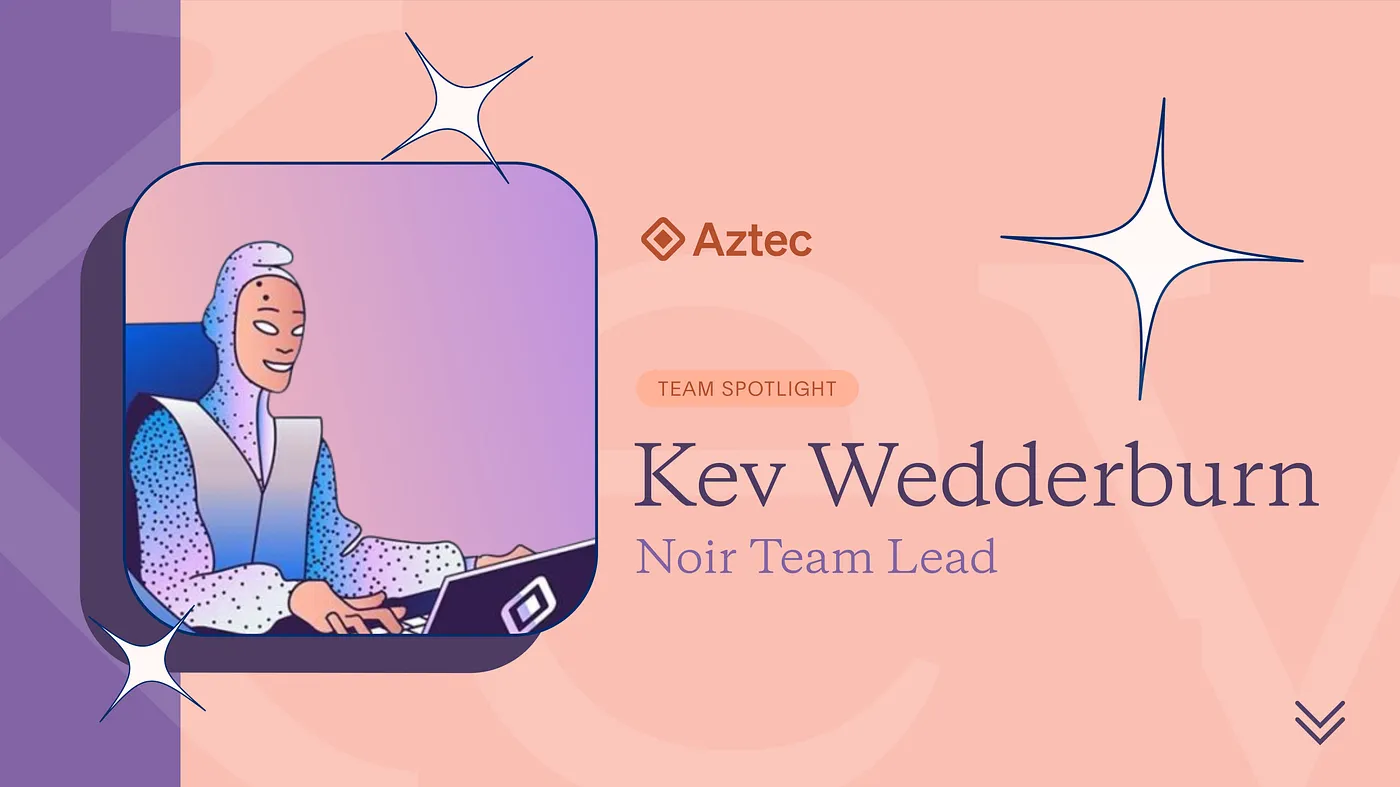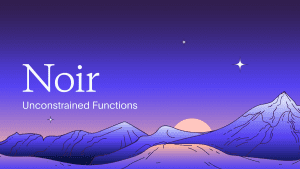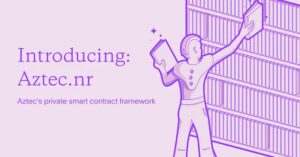Kev Wedderburn is the father, architect, and team lead of Noir, a universal zero knowledge circuit writing language funded by Aztec Labs.
We’re excited to bring you this interview and profile of the man and mystery behind the DSL creating a step-function change in the accessibility of ZK programs.
Alyssa: Hey Kev! Thanks so much for your time, I’d love to give readers a snapshot of your journey into web3 and Aztec Labs, as well as your focus on the Noir team.
Kev: Sure! Let’s jump in.
Alyssa: Can you start by sharing your web2 background?
Kev: Yes. I started out as a front-end developer, then moved into app development.
I built a social media site for books. Then, a janky music-sharing app that would check your playlist, then check my playlist, then if our playlists overlapped enough, it would recommend each of us songs on each other’s playlist (this was before Spotify became Spotify I think).
Alyssa: How’d app development lead you to going full-time web3?
Kev: While transitioning to crypto, I made a tax app that scanned your bitcoin QR code and told you how much tax you owed.
From there, I started doing tutorial videos focused on smart contracts. I wanted to do one for a particular blockchain, and it turned out that they didn’t have a well-functioning wallet. So that’s actually what led to my entry into the web3 space. I didn’t end up finishing that tutorial, I just went on to build the wallet myself.
Alyssa: And this work led to your first formal web3 role?
Kev: Eventually, yes. While I was working on an improved wallet, I noticed the node that the original wallet was interacting with wasn’t that great either. So once the new wallet was finished, I moved on to creating a node in Golang (the wallet was also originally built in Golang).
After I finished the node, I got recruited by a privacy-focused project. And they asked me to build a node for their privacy network.
Once I dug deeper, it turned out they didn’t have a proving system. So then I started learning cryptography to implement a type of ZK proof called bulletproofs — state of the art at the time.
Alyssa: And you’ve primarily worked on privacy within web3 ever since, is that right?
Kev: Yes, I worked for several other privacy blockchains prior to Aztec, such as Monero. At Monero, I pivoted from implementing Bulletproofs to Plonk for increased proving speed, but noticed it was very challenging to program on top of Plonk.
The Plonk constraint system and proving system both have nice properties, but the UX was really bad. So Kobi Gurkan from Geometry Research, and Barry Whitehat from the Ethereum Foundation asked if I wanted to make a compiler — I guess they saw that I was pretty active within Plonk and cryptography in general.
Alyssa: Had you built one before?
Kev: At the time, I didn’t know much about compilers at all, so it was exciting to figure out what the compiler I’d build would look like, what other compilers were doing, and how to make a compiler with the safety guarantees needed for zero knowledge proofs.
That was the beginning of what we now call Noir, and I’ve been at Aztec since.
Alyssa: Wow, okay, so you’ve been with the Noir project since the beginning of Noir’s existence?
Kev: Yeah, exactly.
Alyssa: Amazing, congrats on all the progress you and the team have made. And what about getting into web3 in the first place? Was it through engineering, or your own interest in cryptocurrency? How did that look?
Kev: I first looked at Bitcoin in university, but was deterred by the codebase being challenging to read. But I wanted to learn Bitcoin and teach people about it. Back then, everything was a bit scammy. I even created a Bitcoin book…
Alyssa: Going back to Noir, how do you feel about the experience of learning the language you helped build? Is it intuitive for developers?
Kev: I can tend to over-criticize the things I do. But Noir’s in a solid place. There’s not much to really compare it to….there are other zkDSLs, but they give different guarantees for the most part. For example, Noir provides devs with a high-level language that aims not to sacrifice performance and safety, while Circom gives devs very little safety but allows them to do anything. There are pros and cons to both of these approaches.
The more control you give to a developer, the more powerful things they can do, but they can also easily make mistakes because the compiler is no longer holding your hand or stopping you from doing something potentially dangerous.
But yes, Noir is in a good place for developers to use. There’s still a lot we want to put into the language to make it comparable to common programming languages in terms of UX. But we’re well on our way.
Alyssa: And what about just being on the Aztec Labs team in general, and maybe even the Noir team within Aztec Labs? What’s that like? What do you enjoy about it?
Kev: The Aztec team is cross-functional and fluid, meaning that even though you’re on the Noir team, or the tooling team, or the engineering team, you can touch other parts of the stack. So that’s great about being at Aztec.
The fun thing about the Noir team in particular is that there are so many challenges we have yet to solve. We’ve solved quite a lot of them, but there’s still a lot we’re excited to work on like continuing to improve the UX, as I mentioned.
Alyssa: Love that answer as I know there’s a job opening on the Noir team, so someone joining can have exposure beyond understanding their specific role.
Kev: In fact, we encourage that, if you’re on tooling and you want to create something and the compiler just doesn’t seem to be fit to do what you want, feel free to start some print or tasks to modify the compiler. We’re always open to new ideas.
Alyssa: Really cool, that’s great. And what about beyond web3, any general interests or hobbies?
Kev: Generally speaking, I really like maths. I also used to sing and play guitar for quite a while, and I exercise a lot these days.
Alyssa: Thanks again for the chat, great learning a bit more about your work, Kev!
Kev: Thank you!
Get started with Noir
We think Noir has the best syntax, most modularity, and best ecosystem of any ZK language. But don’t take our word for it.
Get started with Noir at noir-lang.org.





